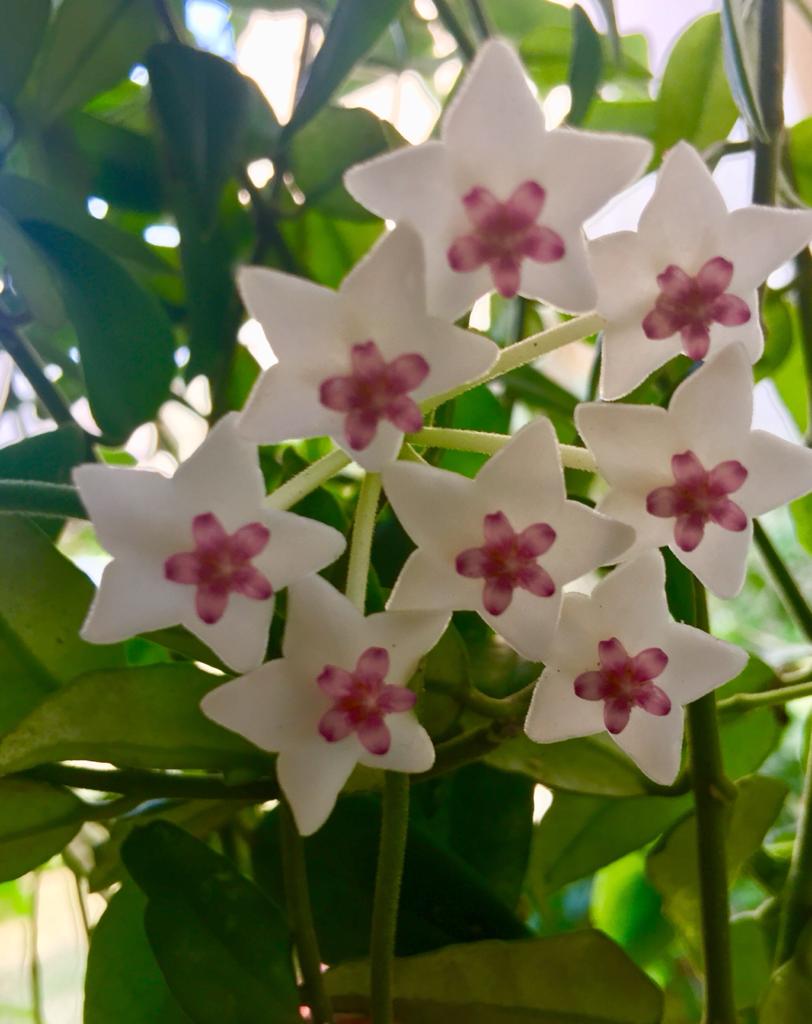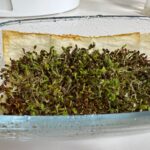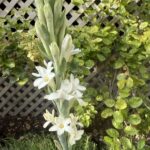The Hoya Carnosa was one of my very first indoor plants which I have managed not to kill. I bought it for a very reasonable price as a tiny plant with 5 leaves. Over the last few years, it has grown well but not flowered yet. I can see the nodes now and hope it will flower soon. The name “Hoya” honours Thomas Hoy (1750 – 1822), gardener to the Duke of Northumberland. Hoy was the first to bring this superb house plant into prominence. Native to southern India, highly prized, and the subject of legend, Hoya plants are from the Asclepias (milkweed) family. They are found throughout eastern Asia to Australia. The exact number of Hoya plant species is a mystery. But there are up to 550 recognized varieties today and counting. Hoya Carnosa, the Porcelain flower or wax plant, is an Asclepiad type of blossoming plant in the dogbane family Apocynaceae. As with so many of my plants, it was my mentor’s enthusiasm for Hoya that made me pick this one up. Hoya’s are easy plants to take care of but often don’t bloom easily as the conditions have to be just right for them to bloom. But their lush green foliage is reward enough. Just enough water, regular fertilization, and bright enough light are the factors that do make them bloom. The Hoya prefers well-draining soil but also likes to be root bound so there is no need to change its pot often. In fact, keeping it in the same pot might force it to bloom. Hoyas typically bloom only when they are mature. So, it might take your plant 2-3 years to bloom. Although in temperate climates they do well outside, here in the Gulf they need to be indoors from the beginning of May right until mid-October. Between mid-October and April, you can bring the plant out and leave in a bright spot without any direct sun. All my indoor plants live outside until the beginning of May after which I bring them inside for the summer until October. They flourish and do well and then live inside for a while. The key things are careful watering and regular fertilizer. I use the fertilizer spikes and they have served me well. One important tip is that you must not cut off the bare vines or tendrils. These are where the growth of leaves and flowers happen. Just twine them on a support and you will see new leaves and the flowers which will come from the node of the leaves. The flowers are highly fragrant and one of the reasons this plant is so highly prized.

These are prone to aphids and mealybugs, but such pests are easily resolvable. They need a mix of potting soil and perlite and I add some vermicompost occasionally to the mix. Interestingly, even if the soil is bone dry the plant stands a good chance of survival as it is a succulent type of plant. Right now my Hoya seems to be showing signs of flower buds. I will update you all with pictures if they do bloom.
Propagating a hoya is not very difficult as it is quite successful from stem cuttings. Hoyas are best propagated here in the Gulf in late February or early March as the active growing season begins. First, fill a pot with a well-draining soil mix, so potting soil with a little vermicompost and perlite or vermiculite works well. Then water it thoroughly enough to have it evening moist but not soggy. Next, take a 6-7inch Hoya stem with four to six leaves. Remove the lower leaves and dip the stem into a rooting hormone either liquid or powder. This is not absolutely essential, but it helps. Then plant the cutting into the pot as prepared earlier. Make sure the leaves do not touch the soil. Water evenly keeping the soil moist but not soggy to avoid rotting. Then place the pot in indirect sunlight as direct sun might bake the young plant.
The young plant takes about 3 years to mature enough to flower or it may not flower at all. A high phosphate fertilizer normally helps, so a little bone meal might help. However the thick, green, faintly speckled leaves are attractive enough and if it flowers it is a bonus.







Recent Comments